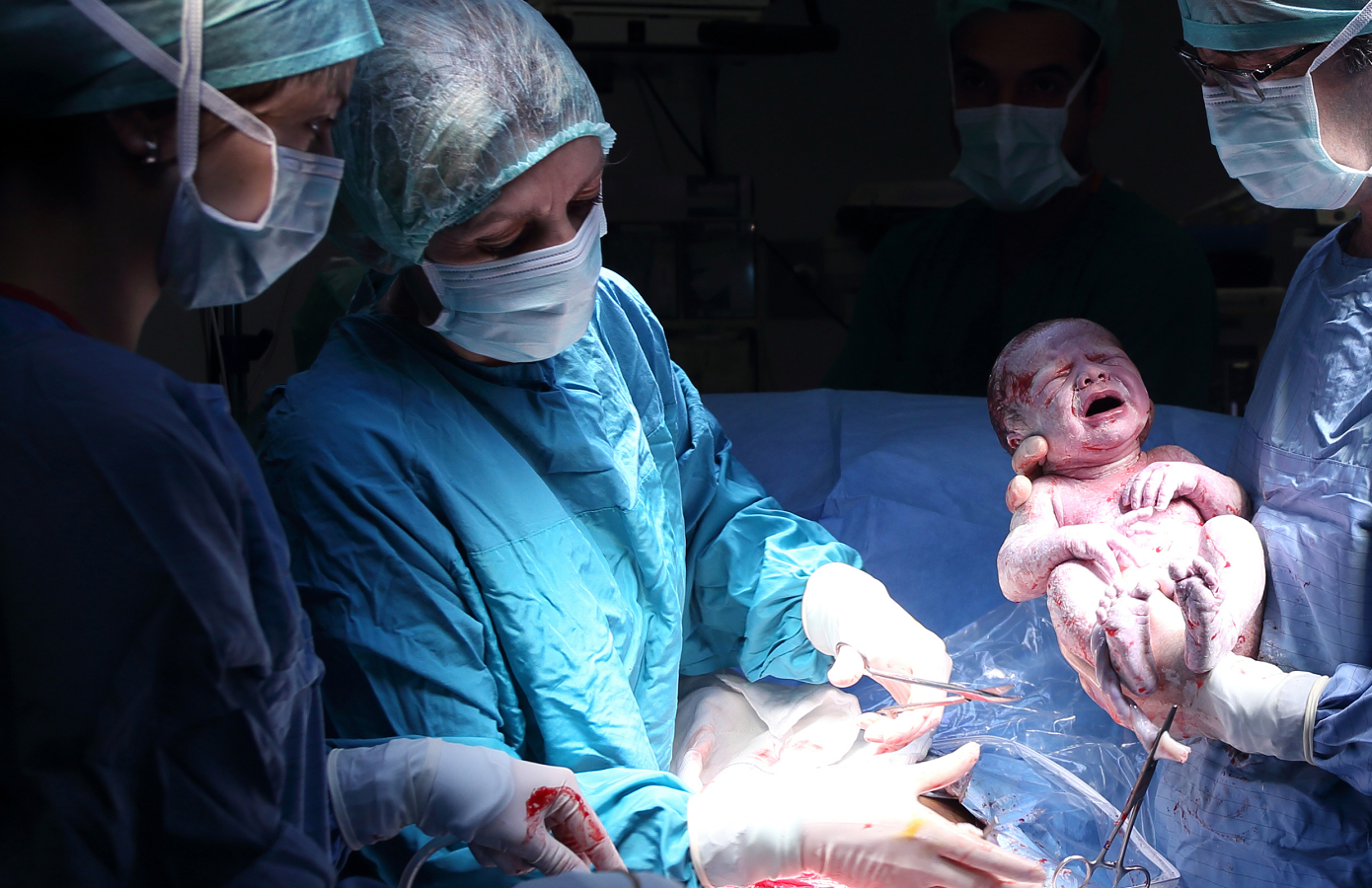Want to read more? Click here to register (via DocCheck).
Need additional information? Click here to contact Corza directly.
BACKGROUND
Corza Hemostasis & Sealing Patch
Corza’s hemostasis and sealing patch is a ready-to-use fixed combination of collagen closed cell matrix and active human coagulation factors to improve hemostasis.
Moreover, sealing capabilities to provide suture support in vascular surgery and prevention of body liquid as well as air leakages are highly demanded. Liquid tight suture hole sealing on top of accelerating the hemostatic cascade are values of Corza’s hemostasis and sealant patch as a dual-action-patch in a range of adult and pediatric indications demonstrated by evidence based medicine.
Quill®
The major advantage of barbed sutures is its ease of use with less time consumed1. Barbed sutures used in gynecological procedures reduce suturing time, mean operative time and intraoperative bleeding2, and provide excellent hemostasis3.
The most important procedures and areas of application in gynecological and senologic surgery for using a hemostasis and sealing patch and Quill®:
- Hysterectomies (Sealing of the cervical stump in hysterectomies; closing vaginal cuff)
- Hemostasis after radical mastectomy
- Axillary lymphadenectomy
- Removal of endometriosis
- Conisation
- Myoma enucleation (esp. for multiple myomas in the anterior uterine wall)
- Caesarean section
- Para-aortic/paracaval and pelvic lymphadenectomy
- Hemostasis in heat-sensitive areas, e.g., adnexa and pouch of Douglas
- Bladder extrophy
- Ovarian torsion
- Cervical fistula
- Operation of urethral valves
- Sacrocolpopexy for mesh fixation
- Vaginal cuff closure after hysterectomy
PRODUCT CAPABILITIES
A hemostasis and sealing patch merges distinct technologies and devices into a unified whole solution for these surgical challenges:
- Mechanical support
- Hemostat
- Air & body liquid sealant
A dual-action patch solution to fit all needs for hemostasis & sealing in one batch-controlled medicinal product.
- Very good tolerance
- Extremely high operational safety and reliability
- Very quick to use
- Immediate success of the application recognizable
- Avoidance/reduction of operational risks
- Reduction of operating times
- Reduction of transfusion risk
- Increased safety for patients
- Uterine incision closure time, operative time, and suturing time reduction.
- Intra-operative blood loss and blood loss during incision closure reduction.
- Post- and peri-operative complications reduction.
- Uniform tension distribution in fixing, creating, or correcting and IMF.
PRODUCTS
How does Corza hemostasis and sealing patch work?
Fibrinogen and thrombin is embedded in the open cells on the surface of the collagen matrix. Upon contact with blood or other body fluids the coagulation factors thrombin and fibrinogen are activated.
On contact with bodily fluids such as blood or lymph, or with normal saline solution, the solid fibrinogen and thrombin components are activated and diffused, partially into the wound surface. Activation of the coagulation factors and the collapse, not destruction, of the collagen cells by compression conglutinate the TachoSil® patch with the tissue surface.
The subsequent fibrinogen-thrombin reaction completes the last stage of the coagulation cascade. The fibrinogen is converted to the fibrin monomer, which is ultimately polymerised to a fibrin clot. A seal is created between collagen patch and tissue.

Want to read more? Click here to register (via DocCheck).
Need additional information? Click here to contact Corza directly.
PRODUCTS
How do Quill® Uni – and Bi- directional sutures work?
Robot Assisted Vaginal Cuff closure with Uni-directional Quill® barbed suture
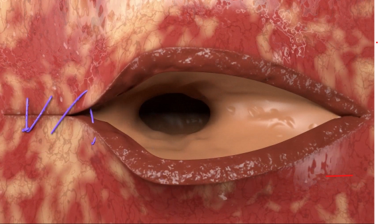
Laparoscopic Vaginal Cuff closure with Uni-directional Quill® barbed suture
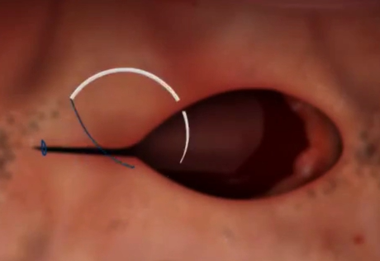
Laparoscopic Myomectomy: 3 layer closure with Bi-directional Quill® barbed suture
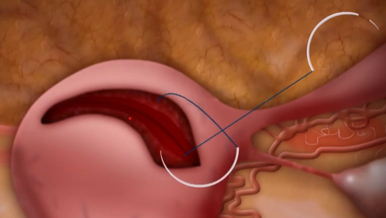
EXAMPLES OF CLINICAL EVIDENCE
Examples of a hemostasis and sealing patch performance in selected gynecologic & senologic procedures
Retrospective Study
TachoSil® for Stemming Atonic Bleeding after Caesarean Section for Placenta Praevia
15 women after caesarean section (bleeding in the inner lower segment of the uterus)
- Primary Endpoint (Hemostasis): Average blood loss: 1200 ml (equivalent to normal loss in caesarean section)
- Secondary Endpoints: Post-op complications
Results
- Primary Endpoint (Hemostasis): Average blood loss: 1200 ml (equivalent to normal loss in caesarean section)
- Secondary Endpoints (post-op complications):
- Successful treatment of all women
- No revision surgery required
- No infections of the endometrium
Conclusion
The authors emphasize the easy and effective use of TachoSil® for atonic bleeding after caesarean section for placenta praevia.
References
Fuglsang K et al. New local Hemostatic treatment for postpartum hemorrhage caused by placenta previa at cesarean section. Acta Obstet Gynecol Scand 2010; 89: 1346–1349
Retrospective Cohort Study
Use of TachoSil® for Controlling Major Bleeding in Gynaecological Standard Operations
84 women after various gynaecological standard operations
- Primary Endpoint: Hemostasis
Results
TachoSil® supports Hemostasis in a wide range of uses
TachoSil® application most frequently:
- After ovarian, breast, and endometrial cancer, fibromas
- On uterine serosa, especially after caesarean section or polymyomectomy
- Lymph sealing in the pelvic or para-aortic region
Conclusion
The authors found that TachoSil® can be used for a wide range of indications in the clinical practice of obstetrics and gynecology.
References
Santulli P et al. Experience with TachoSil in obstetric and gynecologic surgery. Int J Gynaecol Obstet 2011; 113: 112–115
Case-Control Study
Efficacy of TachoSil® for the Prevention of Postoperative Complications after Inguinofemoral Lymph Node Removal in Patients with Malignant Gynaecological Tumours over a Period of 3 Years
24 patients with vulva cancer or recurrent uterus/breast cancer; treatment after lymphadenectomy:
- TachoSil® group (n = 8)
- Control group (n = 16)
Primary Endpoints: Drainage volume and duration
Secondary Endpoint: Post-op complications
Results
Primary Endpoints:
- Average drainage volume after bilateral inguinal dissection (p = 0.001)
- TachoSil®: 133 ml
- Control: 320 ml
- Average duration of drainage (p = 0.003)
- TachoSil®: 3.5 days
- Control: 5.3 days
Secondary Endpoint: Post-op complications
- Lymphatic cysts requiring drainage
- TachoSil®: 25.0%
- Control: 62.5%
- Cellulitis
- TachoSil®: 12%
- Control: 25%
- Wound infections
- TachoSil®: 0%
- Control: 25%
Conclusion
The use of TachoSil® after inguinal lymphadenectomy for malignant gynaecological tumours appears to be useful with respect to the post-op complication rate.
References
Buda A et al. The use of TachoSil for the prevention of postoperative complications after groin dissection in cases of gynecologic malignancy. Int J Gynaecol Obstet 2012; 117: 217–219
Prospective, Randomized Pilot Study
Effect of TachoSil® on Lymphocele Rate, Re-interventions, and Drainage after Pelvic Lymphadenectomy in Women with Endometrial Cancer
58 patients after pelvic lymphadenectomy for endometrial cancer; randomized to:
- TachoSil® (n = 30)
- Control group (n = 28)
Primary Endpoints: Drainage volume and duration, lymphocele rate, re-interventions
Results
- Drainage volume (p < 0.01)
- TachoSil®: 80 ml
- Control: 170 ml
- Lymphoceles (p < 0.05)
- TachoSil®: 7
- Control: 16
- Re-interventions
- TachoSil®: 0
- Control: 0
Conclusion
Intraoperative TachoSil® application reduces lymphocele rate, drainage volume, and duration after pelvic lymphadenectomy.
References
Tinelli A et al. Prevention of Lymphocele in Female Pelvic Lymphadenectomy by a Collagen Patch Coated With the Human Coagulation Factors: A Pilot Study. J Surg Oncol. 2012, 105: 835–840.
Prospective Case-Control Study
Prevention of Lymphoceles using TachoSil® after Endometrial Cancer
55 patients with endometrial cancer (stages IA-II)
After laparoscopic pelvic lymphadenectomy (PL); randomized to:
- TachoSil® group (n = 26)
- Control group (n = 29)
Primary Endpoints: Drainage volume and duration, lymphocele rate, re-interventions
Results
- Drainage volume (p < 0.01)
- TachoSil®: 65 ml
- Control: 150 ml
- Lymphoceles (p < 0.05)
- TachoSil®: 5
- Control: 15
Conclusion
Intraoperative TachoSil® application reduces lymphocele rate, drainage volume, and duration after pelvic lymphadenectomy.
References
Tinelli A et al. Lymphocele prevention after pelvic laparoscopic lymphadenectomy by a collagen patch coated with human coagulation factors: a matched case-control study. Int J Gynecol Cancer 2013; 23: 1–8.
Randomised, Monocentric, Prospective Trial
Reduction of Seroma Formation and Drainage Time after Radical Lymph Node Dissection (RLND): TachoSil® vs. Standard Treatment
70 consecutive patients after axillary or ilioinguinal RLND due to metastatic melanoma
Randomised to:
- TachoSil® group (standard treatment + TachoSil®): n = 37
- Control group (only standard treatment): n = 33
Primary Endpoint: Post-op drainage duration
Results
- Post-op drainage duration (p = 0.01)
- TachoSil®: 20.1 days
- Control: 23.3 days
- Drainage-free patients 21 days post-op (p = 0.049)
- TachoSil®: 86%
- Control: 67%
No intraoperative complications in either group
Conclusion
In RLND, TachoSil® leads to a significant reduction of the drainage time and can reduce lymphatic leaks after surgical procedures.
References
Di Monta G et al. Collagen sealant patch to reduce lymphatic drainage after lymph node dissection. World J Surg Oncol 2012; 10: 275
Objective:
To evaluate the efficacy of TachoSil® in reducing lymphadenectomy-related postoperative complications.
Methods:
10 studies, 720 patients were included. A total of 370 patients (51.4%) had breast cancer, 113 patients (15.7%) had endometrial cancer, 70 patients (9.7%) had melanoma, 61 patients (8.5%) had vulvar cancer, 60 patients (8.3%) had prostatic cancer, and 46 patients (6.4%) had ovarian cancer. TachoSil group vs No TachoSil group.
Endpoints: Incidence of lymphocele, symptomatic lymphocele, the need of percutaneous drainage procedures, the volume of lymph drained, and the duration of the drainage.
Results:
The use of TachoSil decreased the:
- Incidence of lymphocele OR= 0.26; p < 0.00001
- Percutaneous Drainage Procedures OR= 0.34; p < 0.00001
- Total Volume of Lymph Drained p < 0.00001
- Duration of Drainage p < 0.00001
Conclusion:
The use of TachoSil® significantly reduces the total volume of lymph drained, the duration of the drainage, the incidence of lymphocele and symptomatic lymphocele, and the need for postoperative percutaneous drainage procedures.
References:
Gasparri ML, Ruscito I, Bolla D, Benedetti Panici P, Mueller MD, Papadia A. The Efficacy of Fibrin Sealant Patches in Reducing the Incidence of Lymphatic Morbidity After Radical Lymphadenectomy: A Meta-Analysis. Int J Gynecol Cancer. 2017 Jul;27(6):1283-1292.
RESOURCES
Procedural Videos



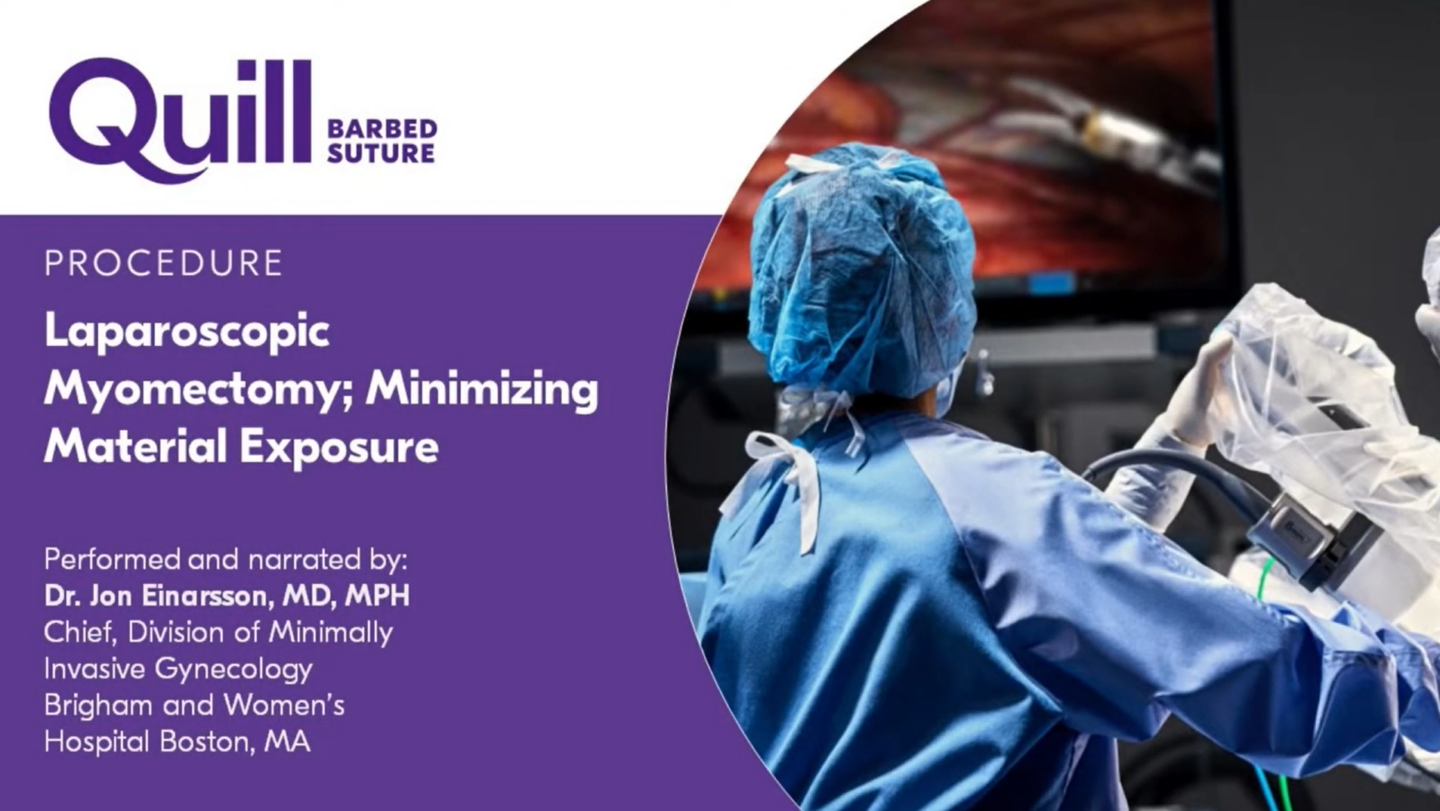
Download area
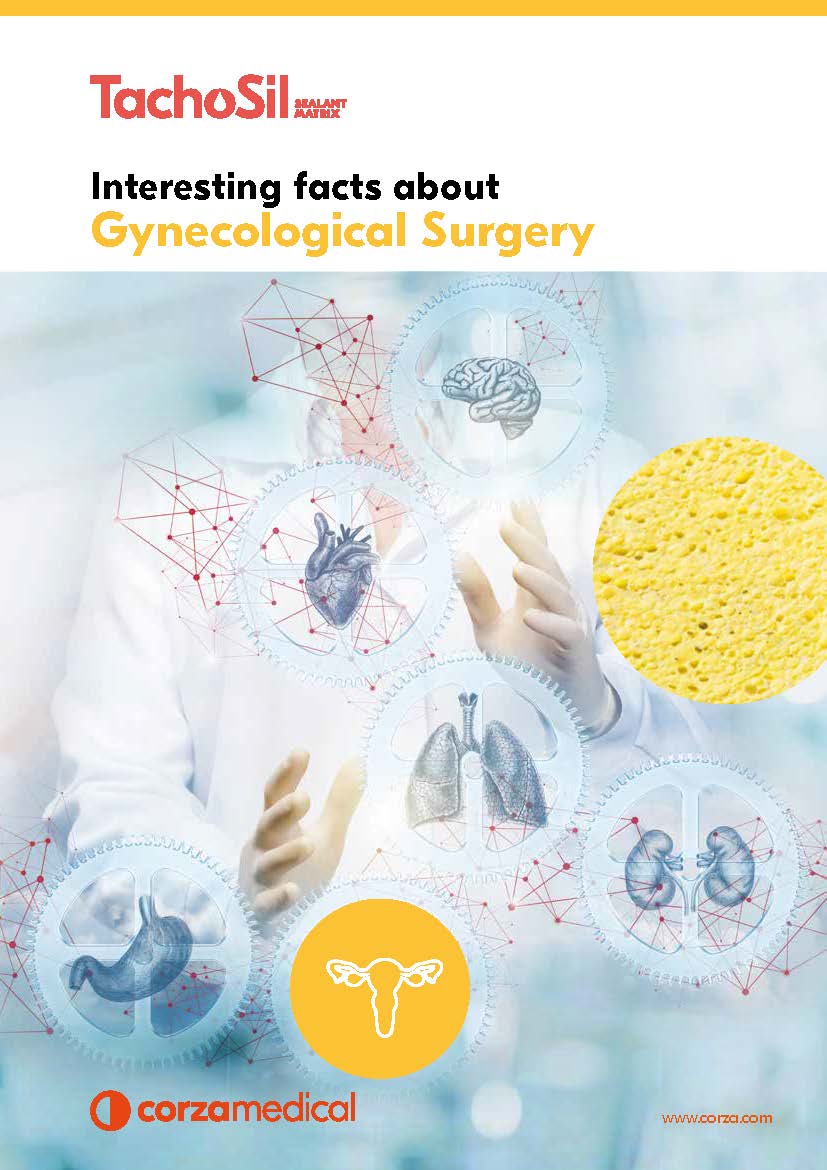
Interesting facts about Gynecological Surgery
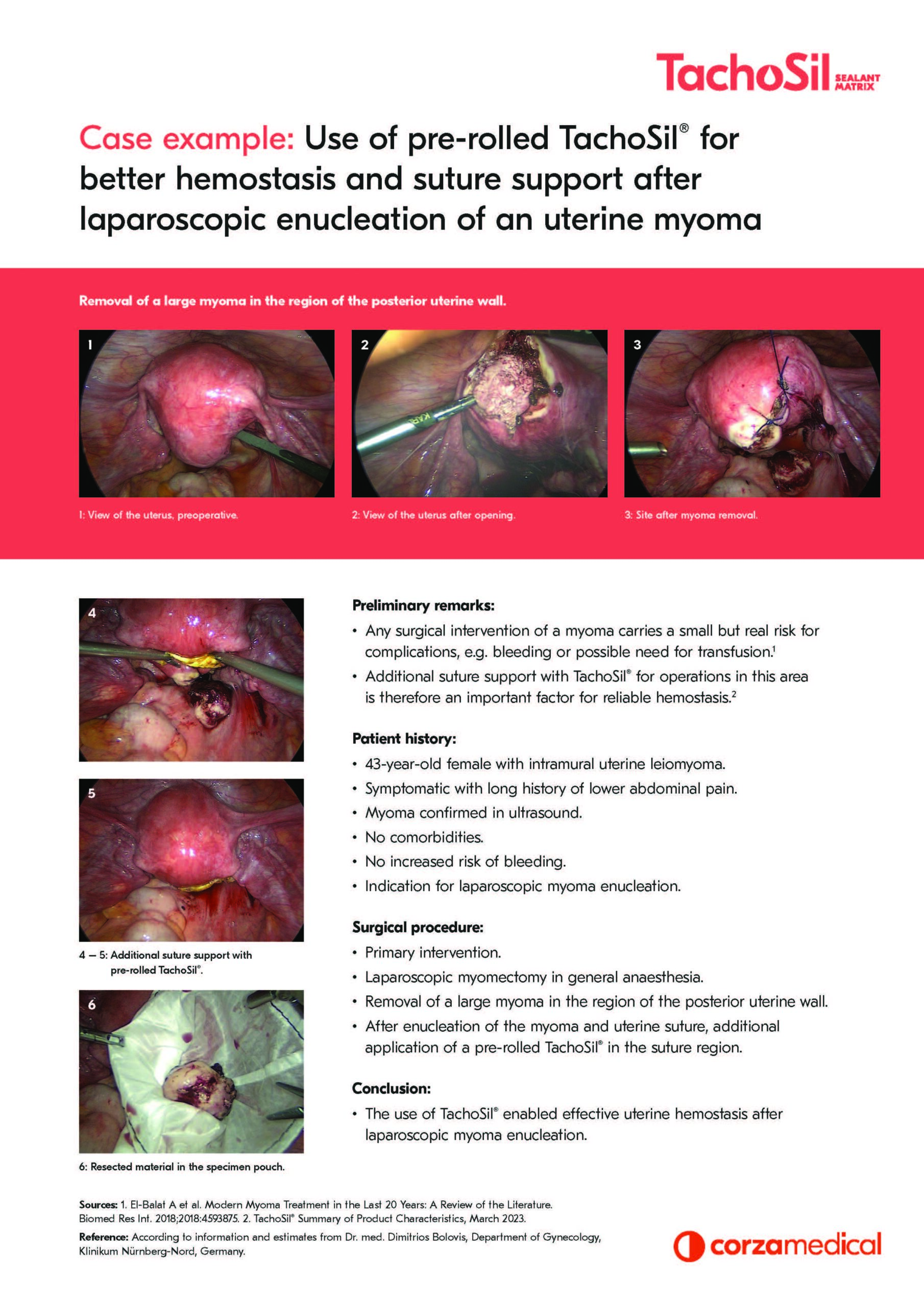
Use of pre-rolled TachoSil® after laparoscopic enucleation of an uterine myoma

The Use of Quill® & TachoSil®
in Gynecological Procedures
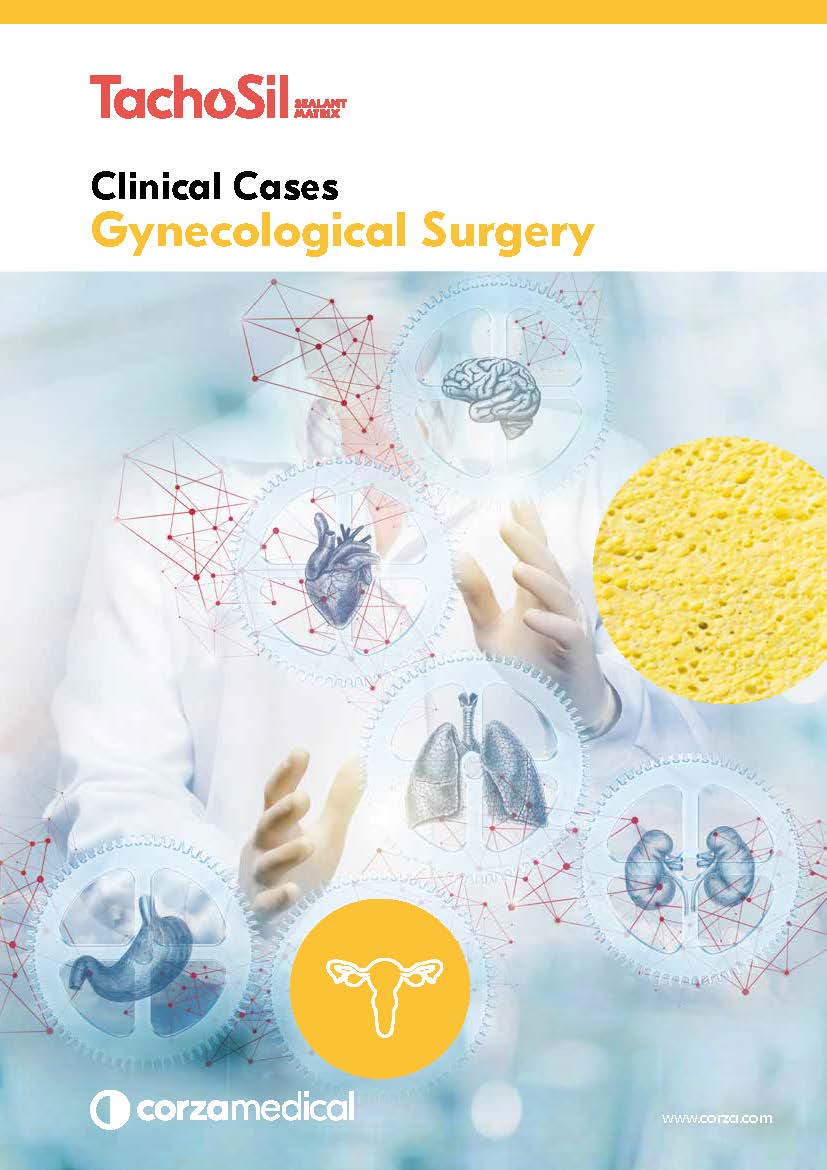
Clinical Cases
Gynecological Surgery
Want to read more? Click here to register (via DocCheck).
Need additional information? Click here to contact Corza directly.
How can we help you?
Who can I contact if I have additional questions?
Please click here to contact Corza Medical for all your questions, comments, medical information inquiries, or suggestions.
Who can I contact if I need to report an adverse event?
Please use one of the following contacts if you wish to address a medical information request, a complaint or pharmacovigilance topics.
MedInfo: medinfo@corza.com
Complaints: quality@corza.com
Pharmacovigilance: Corza-Safety@iconplc.com
How can I order TachoSil®?
Please click here to find the order contact details for your country.
Will the terms and conditions stay the same?
Yes, the terms and conditions under which the TachoSil® products have been supplied to you by Takeda will remain unchanged until such terms and conditions are either terminated or renegotiated.
Where can I find the Summary of Product Characteristics?
Please click here to see the Summary of Product Characteristics.
Will the product stay the same?
Yes, the composition and the mechanism of action of the TachoSil® sealant matrix will not change.
Will the production location stay the same?
Yes, TachoSil® is still produced by Takeda in Linz, Austria. Takeda has entered into a long-term manufacturing and supply agreement, under which it will continue to exclusively manufacture TachoSil® products and supply them to Corza Medical.
When did TachoSil® sealant matrix been a part of Corza Medical?
On February 1, 2021, Takeda confirmed the completion of its previously announced sale of TachoSil® sealant matrix (“TachoSil”) to Corza Health, Inc. (Corza Medical) as of April 1, 2021. As a result, Corza Medical is the legal owner and the sole benefactor of the TachoSil® product. Corza Medical has acquired the assets and licenses that support the development and commercialization of TachoSil®.
Until the completion of the Marketing Authorization Transfer, TachoSil® was marketed under the Takeda brand. With the completion of the Marketing Authorization Transfer, TachoSil® is now part of the Corza Medical productportfolio.
What is a Marketing Authorization Tansfer?
A Marketing Authorization (MA) is the approval to market a medicine in one country. A Marketing Authorization Transfer (MAT) is the procedure by which the MA is transferred from the currently approved Marketing Authorization Holder (MAH) to a new MAH which is a different person/legal entity.
Corza hemostasis and sealing patch in gynecological surgery and Corza wound closure solutions
Clinical publications and further literature
TachoSil® in gynecology surgery
- Barranger E, Morel O, Akerman G et al. TachoSil® to reduce the morbidity of axillary lymph node dissection in breast cancer. Breast Cancer Res. 2007;9(1),SP21. https://doi.org/10.1186/bcr1727
- Berger A et al. Sealing of postoperative axillary leakage after axillary lymphadenectomy using a fibrin glue coated collagen patch: a prospective randomised study. Breast Cancer Res Treat 2001; 67: 9–14
- Buda A et al. The use of TachoSil for the prevention of postoperative complications after groin dissection in cases of gynecologic malignancy. Int J Gynaecol Obstet 2012; 117: 217–219
- Di Monta G, Caracò C, Crispo A et al. Collagen sealant patch to reduce lymphatic drainage after lymph node dissection. World J Surg Oncol. 2012;10:275. doi: 10.1186/1477-7819-10-275. PMID: 23253298; PMCID: PMC3547788.
- Erdogru T. Laparoscopic transvesical repair of recurrent vesicovaginal fistula using with fleece-bount sealing system. Arch Gynecol Obstet 2008; 277: 461–464
- Fuglsang K et al. New Local Hemostatic Treatment for Postpartum Hemorrhage caused by Placenta Previa at Cesarian Sectio. Acta Obstet Gynecol Scand 2010; 89: 1346–1349
- Fuglsang K, Dueholm M, Stæhr-Hansen E et al. Uterine healing after therapeutic intrauterine administration of TachoSil®(hemostatic fleece) in cesarean section with postpartum hemorrhage caused by placenta previa. J Pregnancy. 2012;2012:635683. doi: 10.1155/2012/635683. Epub 2012 Apr 24. PMID: 22619722; PMCID: PMC3348634.
- Nohuz E et al. Efficiency of TachoSil® to prevent postsurgical adhesion development on laparoscopic rat model. Gynecol Surg 2009; 6: 323–329
- Osada H et al. Clinical Evaluation of a Hemostatic and Anti-adhesion Preparation Used to Prevent Post-surgical Adhesion. J Int Med Res 1999; 27: 247–252
- Santulli P et al. Experience with TachoSil in obstetric and gynecologic surgery. Int J Gynaecol Obstet 2011; 113: 112–115
- Shirata I et al. Successful continuation of pregnancy after repair of a midgestational uterine rupture with the use of a fibrin-coated collagen fleece (TachoComb) in a primigravid woman with no known risk factors, Am J Obstet Gynecol 2007; 197: 7–9
- Tekesin I et al. Konservativ-operatives Management der Uterusruptur in der 18. SSW bei Placenta praevia percreta. Geburtshilfe und Frauenheilkunde 1999; 59: 427–429 (German)
- Tinelli A et al. Prevention of Lymphocele in Female Pelvic Lymphadenectomy by a Collagen Patch Coated With the Human Coagulation Factors: A Pilot Study. J Surg Oncol. 2012, 105:835-40
- Tinelli A et al. Lymphocele Prevention after pelvic laparoscopic lymphadenectomy by a collagen patch coated with human coagulation factors: a matched case-control study. Int J Gynecol Cancer 2013; 23: 1–8
- Choi, Chahien; Kim, Woo Young; Lee, Dong Hee; Lee, San Hui Usefulness of hemostatic sealants for minimizing ovarian damage during laparoscopic cystectomy for endometriosis. Journal of Obstetrics and Gynaecology Research Publisher: John Wiley & Sons, Inc 2018 Volume: 44 Issue: 3 Pages: 532-539
- Gasparri ML, Ruscito I, Bolla D, Benedetti Panici P, Mueller MD, Papadia A. The Efficacy of Fibrin Sealant Patches in Reducing the Incidence of Lymphatic Morbidity After Radical Lymphadenectomy: A Meta-Analysis. Int J Gynecol Cancer. 2017 Jul;27(6):1283-1292
- Wrobel A, Winkler I, Rechberger Tet al. Does intraoperative application of TachoSil® reduce the number of lymphoceles after pelvic lymphadenectomy? Ginekol Pol. 2022;93(4):278-283. doi 10.5603/GP.a2021.0065
Preclinical Publication
- Osada H et al. Use of Fibrin Adhesive to Reduce Post-surgical Adhesion Reformation in Rabbits, Int J Med Res 1999; 27: 242–246
Clinical publications with Barbed suture
- Zhang W, Lin Y. Use of Barbed Suture in Laparoscopic Myomectomy with Large Posterior Myoma. J Coll Physicians Surg Pak. 2022 Jul;32(7):920–3.
- Giampaolino P, De Rosa N, Tommaselli GA, Santangelo F, Nappi C, Sansone A, et al. Comparison of bidirectional barbed suture Stratafix and conventional suture with intracorporeal knots in laparoscopic myomectomy by office transvaginal hydrolaparoscopic follow-up: a preliminary report. Eur J Obstet Gynecol Reprod Biol. 2015 Dec;195:146–50.
- Nambi Gowri K, King MW. A Review of Barbed Sutures—Evolution, Applications and Clinical Significance. Bioengineering. 2023 Mar 27;10(4):419.
- Raischer HB, Massalha M, Iskander R, Izhaki I, Salim R. Knotless Barbed versus Conventional Suture for Closure of the Uterine Incision at Cesarean Delivery: A Systematic Review and Meta-analysis. J Minim Invasive Gynecol. 2022 Jul;29(7):832–9.
- Khanuja K, Burd J, Ozcan P, Peleg D, Saccone G, Berghella V. Suture type for hysterotomy closure: a systematic review and meta-analysis of randomized controlled trials. Am J Obstet Gynecol MFM. 2022 Nov;4(6):100726.
- Peleg D, Ahmad RS, Warsof SL, Marcus-Braun N, Sciaky-Tamir Y, Ben Shachar I. A randomized clinical trial of knotless barbed suture vs conventional suture for closure of the uterine incision at cesarean delivery. Am J Obstet Gynecol. 2018 Mar;218(3):343.e1-343.e7.
- Rettenmaier MA, Abaid LN, Brown JV, Mendivil AA, Lopez KL, Goldstein BH. Dramatically reduced incidence of vaginal cuff dehiscence in gynecologic patients undergoing endoscopic closure with barbed sutures: A retrospective cohort study. International Journal of Surgery. 2015 Jul;19:27–30.
- Siedhoff MT, Yunker AC, Steege JF. Decreased incidence of vaginal cuff dehiscence after laparoscopic closure with bidirectional barbed suture. J Minim Invasive Gynecol. 2011;18(2):218–23.
- Kim JH, Byun SW, Song JY, Kim YH, Lee HJ, Park TC, et al. Barbed versus conventional 2-layer continuous running sutures for laparoscopic vaginal cuff closure. Medicine (Baltimore). 2016 Sep;95(39):e4981.
- Barbosa PA, Villaescusa M, Andres MP, Fernandes LFC, Abrão MS. How to minimize bleeding in laparoscopic myomectomy. Curr Opin Obstet Gynecol. 2021 Aug 1;33(4):255–61.
- Angioli R, Plotti F, Montera R, Damiani P, Terranova C, Oronzi I, et al. A new type of absorbable barbed suture for use in laparoscopic myomectomy. Int J Gynaecol Obstet. 2012 Jun;117(3):220–3.
- Alessandri F, Remorgida V, Venturini PL, Ferrero S. Unidirectional barbed suture versus continuous suture with intracorporeal knots in laparoscopic myomectomy: a randomized study. J Minim Invasive Gynecol. 2010;17(6):725–9.
- Gardella B, Dominoni M, Iacobone AD, De Silvestri A, Tinelli C, Bogliolo S, et al. What Is the Role of Barbed Suture in Laparoscopic Myomectomy? A Meta-Analysis and Pregnancy Outcome Evaluation. Gynecol Obstet Invest. 2018;83(6):521–32.
- Tan-Kim J, Nager CW, Grimes CL, Luber KM, Lukacz ES, Brown HW, et al. A randomized trial of vaginal mesh attachment techniques for minimally invasive sacrocolpopexy. Int Urogynecol J. 2015 May;26(5):649–56.
- Borahay MA, Oge T, Walsh TM, Patel PR, Rodriguez AM, Kilic GS. Outcomes of robotic sacrocolpopexy using barbed delayed absorbable sutures. J Minim Invasive Gynecol. 2014;21(3):412–6.
- Montemurro P, Avvedimento S, Hedén P, Quattrini Li A. A Four-Layer Wound Closure Technique with Barbed Sutures for Stable Reset of the Inframammary Fold in Breast Augmentation. Aesthet Surg J. 2016 Sep;36(8):966–71.
- Tomita K, Taminato M, Nomori M, Maeda D, Seike S, Tashima H, et al. A Simple and Scarless Method for Inframammary Fold Correction Using a Barbed Suture. Plastic and Reconstructive Surgery – Global Open. 2020 Jun;8(6):e2930.
- Abu Qasida A, Delay A, Guerid S, Gisquet H, Frobert P, Delay E. Latissimus dorsi seroma prevention with running quilting suture using barbed suture. Annales de Chirurgie Plastique Esthétique. 2023 Jul;S0294126023000729.
- Liang DG, Dusseldorp JR, van Schalkwyk C, Hariswamy S, Wood S, Rose V, et al. Running barbed suture quilting reduces abdominal drainage in perforator-based breast reconstruction. J Plast Reconstr Aesthet Surg. 2016 Jan;69(1):42–7.
References
TACHOSIL® SEALANT MATRIX (human fibrinogen, human thrombin) PRESCRIBING INFORMATION
Refer to Summary of Product Characteristics (SmPC) before prescribing.
Presentation: An off-white sponge coated with human fibrinogen 5.5 mg and human thrombin 2.0 IU per cm2. The active side of the sponge is marked by a yellow colour. Supplied, ready to use, in sterile packaging. Indications: In adults and children from 1 month old, for supportive treatment in surgery for improvement of hemostasis, to promote tissue sealing, and for suture support in vascular surgery where standard techniques are insufficient; also in adults for supportive sealing of the dura mater to prevent postoperative cerebrospinal leakage following neurosurgical procedures. Dosage & Administration: For epilesional use only. Use is restricted to experienced surgeons. The number of sponges to be used is governed by the size of wound area, and the underlying clinical need for the patient. In clinical trials the individual dosages have typically ranged from 1–3 sponges. Sponges should be used under sterile conditions and immediately after opening the inner sterile cover. Prior to application, the wound area should be cleansed, e.g. from blood, disinfectants and other fluids. The sponge should be pre-moistened in saline solution and applied immediately. The yellow, active side of the sponge is applied to the bleeding/leaking surface and held against it with a gentle pressure for 3–5 minutes. Pressure is applied with moistened gloves or a moist pad. If covered with blood, surgical instruments and gloves may be pre-moistened with physiological saline solution to avoid the sponge sticking to them. After pressing the sponge to the wound, the glove or the pad must be removed carefully. To avoid the sponge from being pulled loose it may be held in place at one end, e.g. with a pair of forceps. In the case of stronger bleeding, it may be applied without pre-moistening, while also pressing gently to the wound for 3–5 minutes. The sponge should be applied so that it extends 1–2 cm beyond the margins of the wound. Sponges should be overlapped if more than one is used and can be cut to the correct size and shaped if too large. Any unused medicinal product or waste material should be disposed of in accordance with local requirements. Contraindications: Intravascular use; hypersensitivity to the active substances or to any of the excipients. Warnings & Precautions: No specific data available on the use of this product in gastrointestinal anastomosis surgery. Allergic type hypersensitivity reactions are possible, as with any protein product. If hypersensitivity reactions occur, the administration must be discontinued immediately. In the case of shock, the current medical standards should be followed. Standard measures to prevent infections from products prepared from human blood or plasma include selection of donors, screening of individual donations and plasma pools for specific markers of infection and the inclusion of effective manufacturing steps for the inactivation/removal of viruses. Measures taken are considered effective for enveloped viruses such as HIV, HBV and HCV and for the non-enveloped virus HAV. Measures may be of limited value against non-enveloped viruses such as parvovirus B19. Parvovirus B19 infection may be serious for pregnant women (foetal infection) and for immunodeficient patients or those who have increased erythropoiesis e.g. hemolytic anaemia. Risk of transmission of infective agents cannot be totally excluded, including pathogens of hitherto unknown nature. It is recommended to record the name and the batch number of the product administered to the patient. Interactions: No formal interaction studies have been performed. In comparable products or thrombin solutions, the sealant may be denatured after exposure to solutions containing alcohol, iodine, or heavy metals. Fertility, pregnancy & lactation: Safety use in human pregnancy or breastfeeding has not been established. Only administer to pregnant and breastfeeding women if clearly needed. Undesirable Effects: Hypersensitivity or allergic reactions (in rare cases these reactions may progress to severe anaphylaxis; some cases of product residue causing granuloma); thromboembolism may occur if unintentionally used intravascularly, and adhesions and intestinal obstruction when used in abdominal surgery. Refer to the SmPC for details on full side effect profile and interactions. Marketing Authorisation Holder: Corza Medical GmbH, Speditionstrasse 21, 40221 Düsseldorf, Germany. Marketing Authorisation Numbers: EU/1/04/277/001-005.
Date of revision of the text: March 2023
Detailed information on this medicinal product is available on the website of the European Medicines Agency (EMA)
QUILL® BARBED SUTURE
Quill® barbed sutures are indicated for soft tissue approximation. Absorbable barbed sutures shall be used where the use of absorbable suture is appropriate and nonabsorbable barbed sutures are excluded from closure of the epidermis. Barbed sutures are not intended to be used by tying surgical knots. Avoid crushing or crimping the suture material with surgical instruments, such as needle holders and forceps. To lock the Quill® device in place, it is recommended to employ a few backstitches and cut the remaining suture flush with the tissue to complete. If approximating the subcuticular layer, exit laterally and cut flush with the skin. To avoid small bowel obstruction, care should be taken to not leave barbed suture ends adjacent to the peritoneum in extra peritoneal tissue closure. As with all surgical sutures, adverse effects may include wound dehiscence, failure to provide adequate wound support, infection, minimal acute inflammatory tissue reaction at the wound site amongst others. The safety and effectiveness of Quill® device has not been established for use in several closures, including fascia, gastrointestinal anastomoses and CV tissue amongst others, therefore this product should not be used for these purposes. For complete indications, contraindications, warnings, precautions, and adverse reactions, refer to the instructions for use (IFU).
